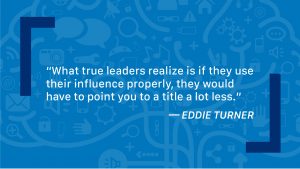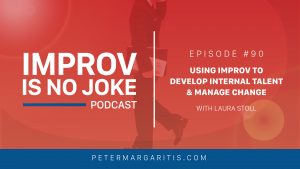
We’ve all been in CPE with “that instructor.” You know, the one who drones on and on about FASB this or tax code that for hours and hours. When someone back at the office asks you what you learned, you draw a complete blank.
Or maybe, you were “that instructor,” and when you looked out at the audience, you saw a sea of heads in the conference prayer, bent down over their phones.
But then there was that time when your instructor peppered her presentation with stories. And not only do you remember those stories, but you remember the points she was making with the stories.
When you combine numbers with stories, you’re taking the numb out of numbers. And when you take the numb out of numbers, what you’ve got left is e-r-s: Effective Relatable Stories.
Why do we need to tell stories? Don’t the numbers speak for themselves?
We accountants are fluent in the language of accounting, a foreign language for most of our clients. We see the meaning in a balance sheet and appreciate the beauty of a set of perfectly reconciled books, but to our clients, it’s just a baffling mass of numbers.
Technology today is changing the work we do. Artificial intelligence, bots, machine learning and automation mean that the repetitive number-crunching pieces of our jobs are going away, and what’s left for us will be what the robots can’t do.
That means we need better communication skills now. We need to be data storytellers.
What is a data storyteller?
In today’s high-speed world, business owners, taxpayers, and decision makers are in desperate need of the insights hidden in their numbers. Because we understand this foreign language of numbers and accounting, we can see the messages hidden in those numbers. Storytelling is the way we bridge the gap.
Data storytelling is when we communicate what the numbers mean. It means using Effective Relatable Stories to convey the information in those numbers to the people who need that information. When we’ve succeeded in communication, they understand and remember what those numbers mean, and they can make the right decisions for their business or their financial future.
Now, some people confuse data storytelling with data visualization. They think that if they just add that pretty waterfall chart to their presentation with arrows pointing to all the key inflection points, then their job is done. All the numbers are right there.
But they’re not the same at all. Data visualization is a tool we can use to communicate complicated accounting information. As a tool, you need to keep it simple enough for people to understand. And unless we explain those charts and graphs with Effective Relatable Stories that our audience understands, we haven’t communicated anything at all.
Why do stories help us learn and understand?
Stories aren’t just for entertainment. Powerful stories evoke emotion and can inspire us to take action and make changes in ways that a PowerPoint data dump can’t. Those just put us to sleep like a lullaby.
If you want your audience to take action, they must be emotionally engaged. Master marketers know this: they know exactly the hook to use that taps into your raw emotion and convinces you to click on that Buy Now button.
Neuroscience backs up the role of stories in helping us learn. When we hear a gripping story, that story lets loose a flood of dopamine in our brain. That’s right. Dopamine — the same neurotransmitter that gets us addicted to drugs, alcohol and gambling. The feel-good chemical. And when those brain circuits get lit up with an emotional charge, we learn better and remember more.
According to neuroscience researcher John Medina, author of Brain Rules, “Dopamine aids memory and information processing. You can think of it like a Post-It note that reads ‘Remember this.’”
Do you remember where you were last Tuesday at 9 am? Probably not. But I bet you remember in crystalline detail where you were and what you were doing on September 11, 2001, when you heard about the planes hitting the World Trade Center. That’s an event you experienced exactly once, but you remember forever.
That’s the impact an emotional charge can have on memory.
Contrast that with studying for the CPA exam, where you had to repeat the same material over and over to get it in your brain for the short time you needed to remember it. A few years later, and I bet you’ve forgotten much of what you learned. But emotionally charged memories stay with us forever.
Using stories to explain complex topics: a real-life example
Not convinced that you can use stories to make accounting interesting or relevant? Here’s an example of how I used an Effective Relatable Story to explain consolidations of variable interest entities when I was teaching an accounting and auditing update at the Arizona Society of CPAs. Consolidating variable interest entities is a complex topic that almost never fails to send audiences of accountants into dreamland, so here’s how I kept everyone engaged.
I asked the audience to raise their hands if they were married. About 80% raised their hands. Then I asked how many had a mother-in-law. I got a few snickers, and everyone kept their hands up.
Then I told them to imagine their mother-in-law as a variable interest entity and showed a slide with an older woman labeled VIE. Then I said, “Your spouse wants your mother-in-law to move into your household, but you do not want your mother in law to move in. This is also known as consolidating into your household.”
Now I had everyone’s attention, and many were smiling. “Your mother-in-law gets money from Social Security and a retirement account, and she loves to play the slot machine.” Next, I showed a picture of the six kids from The Brady Bunch. “Your mother-in-law has six children, who all contribute to her financial well-being. Your family contributes the most because your spouse is a high-school principal and loves to be in control.”
“Let’s recap. Your spouse — the principal — wants to consolidate their VIE mother into your household balance sheet. You prefer that she not consolidate into your balance sheet. You prefer that she spend two months with each of her children, or her agents, so that no one has to consolidate her into their balance sheet.”
Now when I return to Arizona to teach another course, at least one person will come up to me and say, “You’re the mother-in-law guy, right?” They still remember that one story that I told once several years ago.
Next time you have to explain a complex accounting concept to a client, try putting it into terms that your client can relate to, and tell an engaging story around those relatable terms. At the very least, you won’t have numbed them with the numbers!
This article was adapted from my latest book, Taking The Numb Out Of Numbers: Explaining and Presenting Financial Information with Confidence and Clarity.


 Today’s business buzzword? Collaboration. But how do you do less talking about collaboration and more… well, collaboration?
Today’s business buzzword? Collaboration. But how do you do less talking about collaboration and more… well, collaboration?  Mary Foley energizes female entrepreneurs with the clarity, confidence, and tools to attract, engage, and win more clients. She is an author, energizing keynote speaker, business mentor, host of the P.O.W.E.R. Plug Podcast, and a lover of red capes.
Mary Foley energizes female entrepreneurs with the clarity, confidence, and tools to attract, engage, and win more clients. She is an author, energizing keynote speaker, business mentor, host of the P.O.W.E.R. Plug Podcast, and a lover of red capes. The episode will be live on Monday, February 19th at 8:00 am EST. Here’s a sneak preview:
The episode will be live on Monday, February 19th at 8:00 am EST. Here’s a sneak preview: